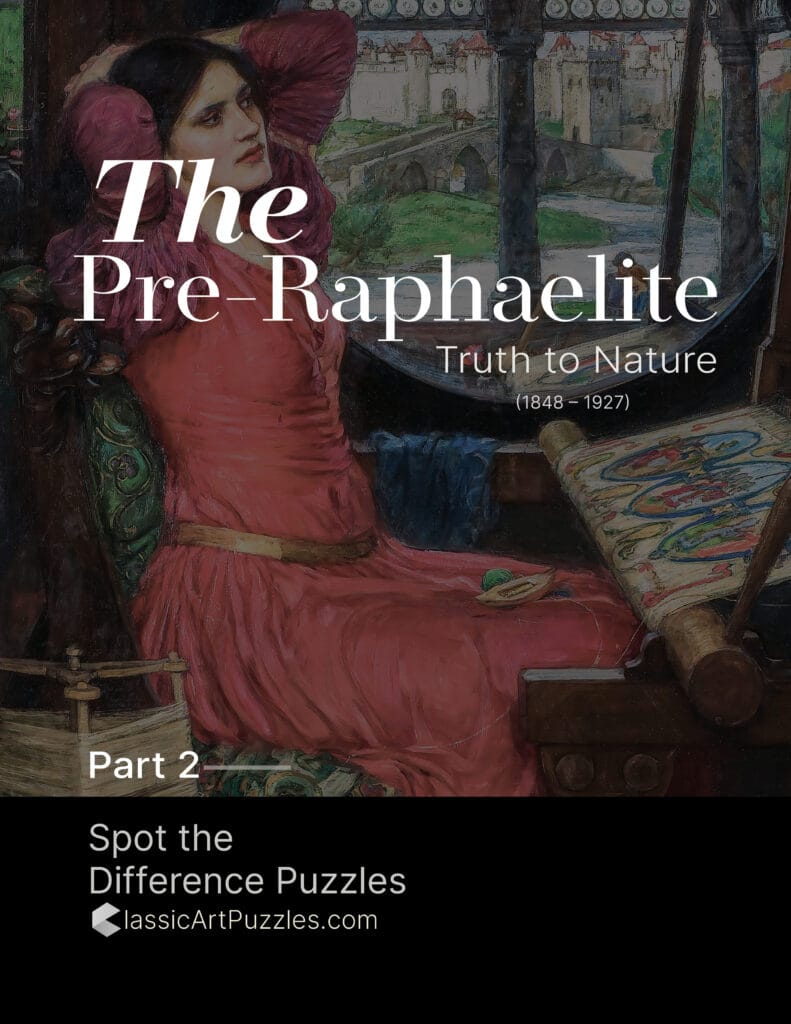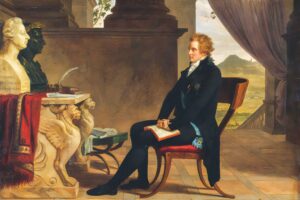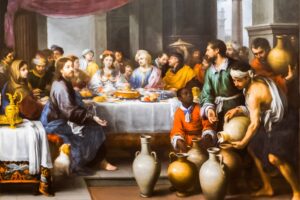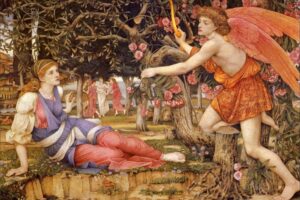Table of Contents
Overview
Painted in 1851 by John Everett Millais (1829–1896), Mariana stands as one of the earliest triumphs of the Pre-Raphaelite Brotherhood. Inspired by Alfred Lord Tennyson’s 1830 poem of the same name, the painting captures a moment of yearning and solitude: a woman stretches at her embroidery table, weary from long hours of waiting for a lover who never returns.
The scene overflows with symbolic detail — the stained glass of the Annunciation, autumn leaves scattered across the floor, and the posture of tension and longing in Mariana’s body. Every element reinforces the theme of unfulfilled desire and the passage of time.
When exhibited at the Royal Academy in 1851, Mariana captivated viewers with its luminous colors and meticulous realism. Today, it remains one of the quintessential Pre-Raphaelite images, marrying literature, symbolism, and an intensity of emotional expression.
The Artist
John Everett Millais (1829–1896) was a founding member of the Pre-Raphaelite Brotherhood, alongside Dante Gabriel Rossetti and William Holman Hunt. Known for his dazzling use of color, painstaking attention to natural detail, and ability to merge literature with visual art, Millais helped redefine Victorian painting. His works often drew on Shakespeare, Tennyson, and biblical themes, blending realism with allegory. Later in life, he shifted toward portraiture, becoming one of Britain’s most successful painters.
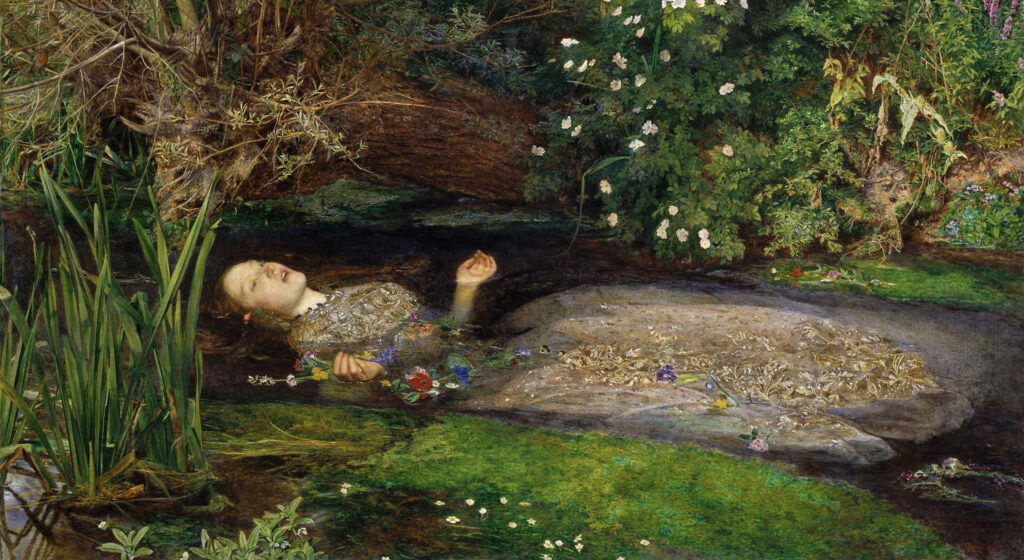
The Story Behind the Painting
Tennyson’s Poetic Inspiration
The subject of Mariana comes directly from Alfred Lord Tennyson’s 1830 poem, which retells the story of Mariana from Shakespeare’s Measure for Measure. In both works, Mariana is a woman abandoned by her fiancé, living in solitude and consumed by longing. Tennyson’s poem emphasizes her cry of despair: “She said, I am aweary, aweary, I would that I were dead!”
The Moment Depicted
Millais translates this literary sorrow into visual form. Mariana pauses in her embroidery work, arching her back in fatigue, her face turned toward the stained-glass window. The detail of the embroidery on the table, representing the endless labor of waiting, underscores her confinement.
Victorian Resonance
For Victorian audiences, Mariana symbolized both romantic abandonment and the societal constraints placed on women. Her loneliness was not only personal but emblematic of a wider cultural theme: the yearning for fulfillment in a rigid and moralistic society.
Composition and Subjects
Mariana Herself
Mariana stands in her deep blue velvet gown, her figure glowing in the light that streams through the window. Her posture — back arched, arms pressed to her sides — conveys tension, longing, and the weariness of endless waiting.
Symbolic Objects
- Stained Glass: Depicts the Annunciation, echoing themes of waiting and divine message.
- Autumn Leaves: Scattered across the floor, they symbolize time passing and life’s decay.
- Embroidery Table: Represents the monotonous labor of confinement and feminine duty.
- Candle and Altar: Hints of devotion and patience, underscoring her isolation.
Use of Light and Color
The rich lapis blue of Mariana’s gown dominates the scene, contrasting with the warm reds of the stained glass and the golden autumn leaves. Light falls from the window, illuminating her figure and linking her directly to the sacred imagery above.
Art Style and Techniques
Pre-Raphaelite Naturalism
Millais painted with exquisite detail, from the texture of the embroidery to the fallen leaves. The Pre-Raphaelite commitment to “truth to nature” is fully realized here, with every element carefully observed.
Symbolism
The painting is not only a scene but a tapestry of meanings: isolation, longing, faith, and mortality. Each object — from the window to the leaves — contributes to the allegory.
Literary Fusion
By uniting Tennyson’s poetry with vivid realism, Millais creates a work where literature and painting enrich one another, a hallmark of Pre-Raphaelite art.
Featured in Our Collection
Mariana is part of our Pre-Raphaelite Spot-the-Difference Puzzle Flipbook. Its jewel-like colors, intricate symbols, and emotional depth make it a challenging and rewarding puzzle. Each detail — from stained glass to fallen leaves — reveals the artistry of Millais while sharpening your eye for visual discovery.
The Lonely Embroideress
Her gown glows like a sapphire, autumn leaves scatter at her feet, and light from the Annunciation window floods the room. Millais’ Mariana is a hymn to waiting — a portrait of longing caught between poetry, faith, and time.
More About Artist
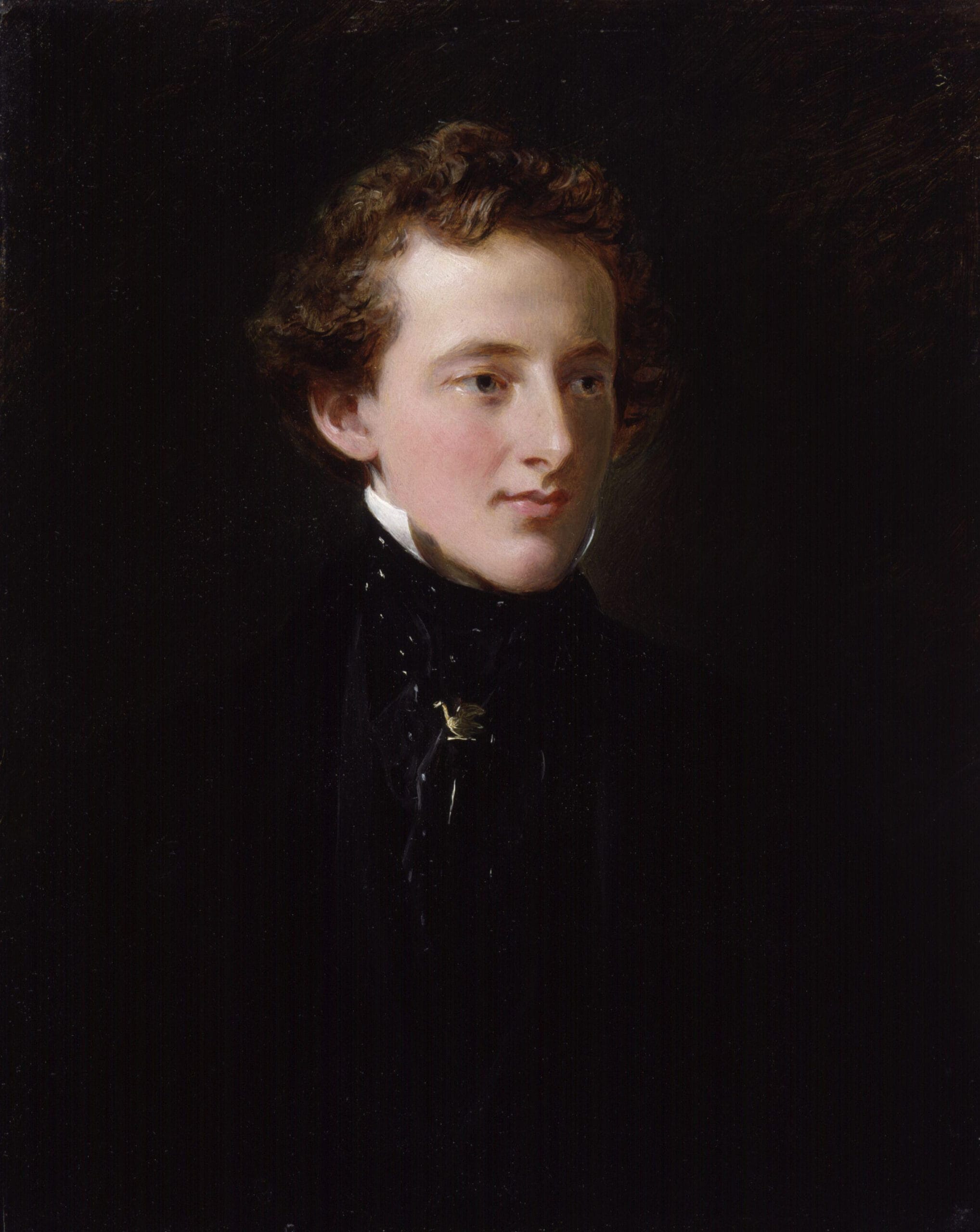
Sir John Everett Millais, 1st Baronet PRA (June 8, 1829 – August 13, 1896), was an English painter and illustrator, famously one of the founders of the Pre-Raphaelite Brotherhood. Born in Southampton, Millais showed early artistic talent and was the youngest student admitted to the Royal Academy Schools at age eleven. The Pre-Raphaelite Brotherhood, founded at his family home in London, challenged the prevailing artistic conventions by emphasizing naturalism, vivid detail, and complex symbolism. Millais became the most famous exponent of the style, though his later work evolved toward a more mainstream Victorian realism.
Artist Style and Movement
Millais’s early work epitomizes the Pre-Raphaelite style, notable for its vibrant colors, painstaking detail, and historical or literary subjects often laden with symbolism and emotional intensity. His early paintings often stirred controversy for their realism applied to sacred or historical themes. Later in life, Millais shifted towards a broader realism, which garnered him vast success and official acclaim, including presidency of the Royal Academy. Despite criticism from some contemporaries for this stylistic shift, his work remains crucial in understanding Victorian art.
Notable Works
- Mariana (1851), an iconic Pre-Raphaelite image of yearning and waiting, inspired by Tennyson’s poem.
- Isabella (1848–1849), a vivid narrative painting illustrating a tragic Renaissance tale in exquisite detail.
- Christ in the House of His Parents (1849-1850), a controversial yet seminal work depicting a realistic Holy Family at work.
- A Dream of the Past Sir Isumbras at the Ford (1857), a dramatic medieval scene emphasizing chivalry and heroism.
- Peace Concluded (1856), a romantic allegory celebrating harmony.
- Love and the Maiden (1877), an allegorical work showcasing Millais’s mature style.
- Charon and Psyche (1883), inspired by classical mythology and exploring themes of soul and death.
- Pine Woods at Viareggio (1888), a landscape reflecting his Italian influences.
- The Gentle Music of a Bygone Day (1873), evoking nostalgia and memory through genre scenes.
- The Waters of Lethe by the Plains of Elysium (1880), a symbolic painting referencing classical mythology.
- The North-West Passage (1874), a patriotic and historical narrative celebrated in British art.
- An Idyll of 1745 (1884), depicting a romanticized historical rural scene.
John Everett Millais’s career was a defining force in Victorian art, shaping the Pre-Raphaelite movement and influencing generations of British painters. His ability to combine technical virtuosity with deep narrative and emotional resonance made him both commercially successful and artistically influential. Alongside his dramatic early works, his later mastery of portraiture and landscape confirmed his status as one of the foremost artists of 19th-century Britain.

